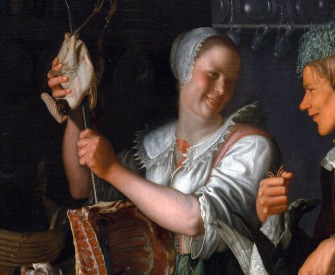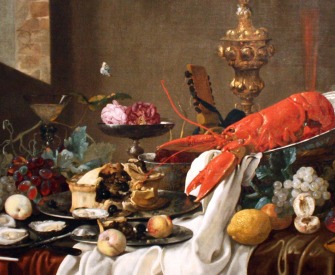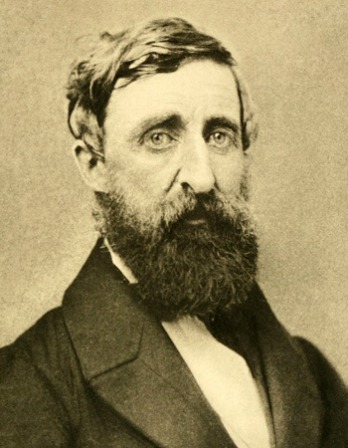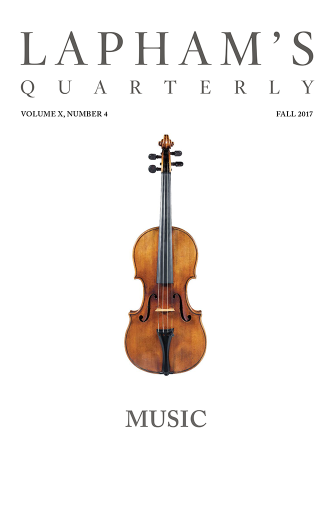It is not my design to drink or sleep; my design is to make what haste I can to be gone.
—Oliver Cromwell, 1658Mournful Creatures
Humans may be the only animals who understand our mortality, but when it comes to grieving, we are not so unique.
By Virginia Morell
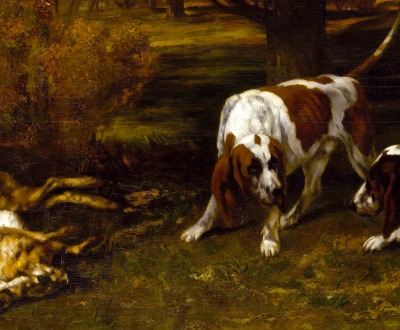
Hunting Dogs with Dead Hare, by Gustave Courbet. 1857. The Metropolitan Museum of Art, H.O. Havemeyer Collection, Gift of Horace Havemeyer.
It is often said that our understanding and knowledge of death separates the human animal from all other animals. We alone know that we will die—that one day, suddenly or slowly, our life, our loves, our dreams will end. Surely this awareness sets us apart from the rest of the animal kingdom, we say, pointing to some of our greatest art, music, and literature—all inspired by what we know: that death awaits every living being. And yet, how very odd it is that we should be the only animal to know what life ultimately has in store for us. We share biological histories and physiologies—DNA, eyes, muscles, nerves, neurons, hormones—with other animals, and these may lead to similar behaviors, thought processes, and emotions—even about death.
Take the case of Thomas, a nine-year-old chimpanzee who died in 2010 at the Chimfunshi Wildlife Orphanage Trust in Zambia, home to more than one hundred chimps. Research scientists filmed the reactions of one community of forty-three chimpanzees to Thomas’ corpse; thirty-eight of them gathered around and stayed by his side for almost twenty minutes. During that time, some of the chimps gently touched his body, smelled and studied him closely. One of those visitors was Masya, a mother carrying her dead infant (at the time, there was an outbreak of a respiratory illness among the chimps). A few days earlier, Masya had been seen placing her dead child in a grassy, sunlit patch and retreating to the shade, where she sat watching, her eyes rarely straying from her infant. Every few minutes, she strode back to the clearing to inspect her baby’s body. At times she did so hurriedly, jumping up and rushing forward as if she thought she’d detected a stirring. She studied her child’s face intently, peered into her gaping mouth and wide eyes, and brushed away the flies. Finally, she placed her knuckles softly against her infant’s neck—hoping, it seems, for any sign of life.
The chimpanzees gathered at Thomas’ side also appeared to be trying to come to grips with what had happened. One female smacked his body, hard—while the others paid close attention, looking, perhaps, for a reaction. Their faces were serious, their manner subdued. One adult male appeared even more distraught than the others; the researchers say this chimp had cared for Thomas for over four years and “had a very strong social relationship” with the dead chimp. He left and returned several times to view the body, as if unable to believe what he was seeing. Finally, he stepped between the others to get as close as possible. He scrutinized the body and erupted in frantic screams while walking rapidly over the cadaver.
Was this a chimpanzee wail of grief? Had the male friend and other chimpanzees come together to mourn Thomas? The scientists who recorded these events prefer not to use such words. Yet the chimpanzees’ behaviors—which mirror many of our own when we lose a loved one—suggest that, like us, they have trouble accepting death when it comes to one of their own. As with most emotions in animals, we do not yet understand their reactions with total clarity—but, as Charles Darwin wisely observed, they may very well have meaning. Perhaps we are the only animals with foreknowledge of death, but when it comes to grieving, we are not so unique.
The study of animal grief is a young field, largely because studies of any animal behaviors that one might think of as “human” were ignored for much of the twentieth century. It was commonly held that nonhuman animals were only reactive beings, lacking thoughts and emotions, and responding to stimuli as unthinking, unfeeling robots. Scientists were cautioned about being anthropomorphic, that is, regarding animals as they are often depicted in naive films and storybooks—as if they were people dressed up in fur or feathers. Researchers who thought they detected animal emotions—especially those that we think of as uniquely human, such as love, joy, or grief—were considered to be sentimentalists. And their reports (such as Darwin’s about the grieving cows) were dismissed as anecdotal.
In the last few decades, though, wildlife biologists have amassed so many firsthand accounts of animals caring for and mourning their dead that the idea of animal grief is no longer as suspect as it once was. Two recent books, both published in March of this year, explore the subject. How Animals Grieve, by anthropologist Barbara J. King, collects anecdotal and scientific data on grief in many kinds of animals, even some that most researchers ignore, such as rabbits, goats, and turtles. In The Bonobo and the Atheist, primatologist Frans de Waal examines the biological roots of religion and morality. Since our awareness of death is often cited as the reason we developed religion, de Waal investigates whether other animals have a similar sense of their ultimate end. While King doubts that even our close chimpanzee relatives are “aware that death is coming,” de Waal suggests that older apes or elephants may have experienced enough of life to comprehend that they, too, will die. “When an old ape notices that trees are harder and harder to get into or an elephant has ever more trouble keeping up with the herd, might these individuals not apply what they have learned about life and death to their own bodies?” de Waal asks. “It’s hard to know, yet impossible to rule out.”
Scientists grappling with animal grief must find some way of framing their questions into hypotheses they can test. So far, none of them have figured out how to set up an experiment to address de Waal’s question. But they are getting closer to answering what once seemed an equally daunting problem: why do animals grieve? As King points out in her book, there are enough examples of grief in species as varied as goats, baboons, and gorillas that the emotion may be an experience shared by many species. If so, then it must have an evolutionary history and confer some benefit—that is, it must be advantageous in some way, enabling the mourner to survive long enough to reproduce and pass his or her genes to the next generation. Otherwise, natural selection would have weeded out grief long ago.
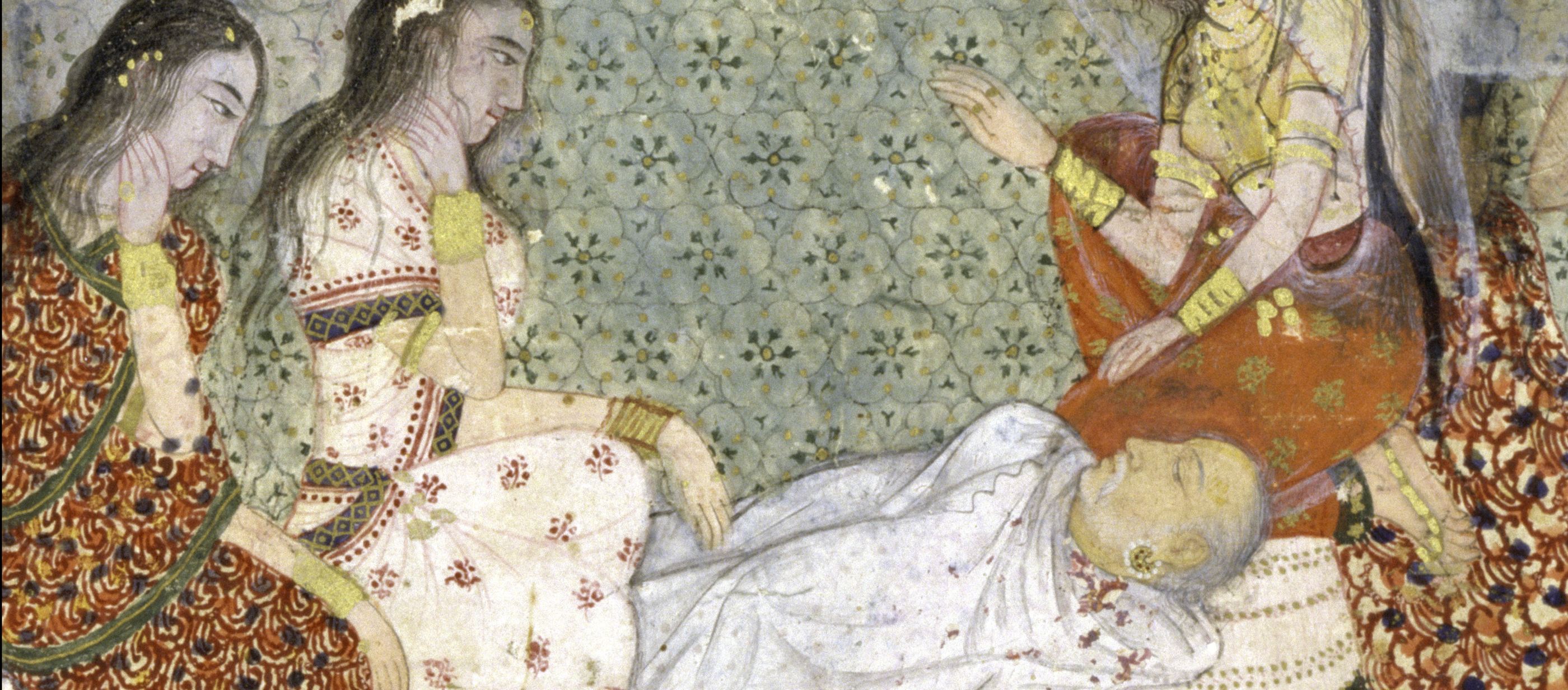
Death of King Dasharatha, father of Prince Rama, detail from a c. 1605 illustrated manuscript of the Ramayana. The Metropolitan Museum of Art, Cynthia Hazen Polsky and Leon B. Polsky Fund.
From a study of twenty-two wild-baboon females who had lost either an infant or other close relative to a predator, scientists know that the animals’ stress hormones flare for four weeks after the attack. They typically act in a “bereaved” manner, too, the researchers say, sitting apart from other baboons and not seeking out grooming (a behavior that has both social and hygienic benefits). In time, the baboons’ stress hormones subside, and they again spend time with their fellows. At first glance, it would seem that grieving would leave baboons—or other mourning animals—at great risk of either falling ill or being taken by a predator themselves. But another study, by neuroscientists Karen Wager-Smith and Athina Markou, which King discusses at length, suggests that the mourning period is actually a neurobiological necessity, particularly for any animal that forms close bonds with another individual. The researchers note that stress can inflict “microdamage” in key areas of the brain, such as the hippocampus and prefrontal cortex, both of which are concerned with memory, emotions, personality, and planning. But the brain is not a static organ; it responds dynamically to life’s events by pruning away neurons that are no longer needed and sprouting new ones. Rewiring takes time and energy, and so a period of mourning—of sleeping longer, minimizing social contact, eating less—can ultimately prove beneficial. And, indeed, all of the baboons eventually recovered from their grief, made new friends, or gave birth to new children. Grief for them can have an “adaptive value,” as evolutionary biologists are fond of saying; it enables an animal to recover from what is essentially minor brain trauma and carry on with the purpose of life—reproducing.
But discerning whatever adaptive value or evolutionary benefit grief might confer doesn’t answer another important question: how do animals experience grief? Is it at all like the sorrow we feel when a loved one dies? Can it be so all-consuming that one never recovers?
Apparently so. How else to explain the behavior of Flint, a male chimpanzee whom Jane Goodall observed at Gombe Stream National Park in Tanzania for the eight and a half years of his short life. Flint could not express in words what he felt about his mother’s death, but no one could misinterpret his actions. Flint’s mother, Flo, was in her early forties when she gave birth to her son. That’s close to old age for chimpanzees, and it may explain why Flo wasn’t the strict mother she’d been to her younger children. For whatever reason, she let Flint do whatever he pleased, nursing at her breast long past the age (four or so) when he should have been weaned, and riding on his old mother’s back until he was eight, an age when he should have been walking everywhere on his own. The pair was inseparable, and then Flo died.
“It seemed,” Goodall wrote in Through a Window, a memoir of her thirty years of chimpanzee research at Gombe, “that [Flint] had no will to survive without her…Never shall I forget watching as, three days after Flo’s death, Flint climbed slowly into a tall tree near the stream [where she had died]. He walked along one of the branches, then stopped and stood motionless, staring down at an empty nest. After about two minutes he turned away and, with the movements of an old man, climbed down, walked a few steps, then lay, wide eyes staring ahead. The nest was one which he and Flo had shared a short while before Flo died.”
Flint never recovered from his loss. He grew lethargic, refused food that the researchers set out for him, and fell sick. The last time Goodall saw him alive, he was “hollow-eyed, gaunt, and utterly depressed, huddled in the vegetation close to where Flo had died…The last short journey he made, pausing to rest every few feet, was to the very place where Flo’s body had lain. There he stayed for several hours, sometimes staring and staring into the water. He struggled on a little farther, then curled up—and never moved again.”
Flint’s response was entirely maladaptive. It did not help one whit in terms of fitness; he never reproduced, his genes were not passed to the next generation. So profound was Flint’s love for his mother and his sorrow at her death that he simply gave up the will to live.
Many of us may not be that surprised that the spectrum of behaviors in chimpanzees’ reactions to death are recognizably human—from the extreme agony of Flint, to the disbelief of the mourning mother, Masya, to the wails of Thomas’ friend. (The latter two recovered from their grief, as do most of us humans.) As poignant as these stories are, they fit with the idea of chimps acting like we do—an idea we’re a little more accustomed to, since our two species share about 98 percent of each other’s DNA.
Yet grief in one form or another has been reported among many other species. While these episodes of apparent mourning may be somewhat harder to classify than Flint’s, they are no less real. Elephants often linger over the skeletal remains of other elephants, caressing and smelling the bones. In a video that recently popped up on YouTube and went viral, a dog in the Middle East is shown carefully burying a dead puppy—nobody seems to know whether or not this was the mother interring her own pup—and sniffing at the carcass until it has made certain that every last bit of the pup’s fur is covered with sand. Even Laysan albatrosses—large, monogamous seabirds—are known to mourn for a year or two if they lose their mate. They sit dejected among the gregarious breeding pairs on Midway Atoll, where the birds gather to nest, as if uncertain of their purpose.
Of course, these observations, as affecting as they are, do not tell us how an animal is mentally processing something such as the discovery of another’s remains or the loss of a lifelong partner or child. They also depend largely on serendipity—on someone being on hand to record the event. And then they are open to any number of interpretations, since we humans readily project our own thoughts and emotions onto others. Scientists thus prefer to design experiments that can be replicated. If other scientists conduct the same experiment, they should obtain the same results.

The Death of Sardanapalus, by Eugène Delacroix, 1844. Louvre Museum, Paris, France.
That’s why I was excited to read a paper last year with the title “Western Scrub-Jay Funerals.” Even though we’re less reluctant to attribute grief or sorrow or love to other animals than we may once have been, seeing the word funerals attached to scrub jays was somewhat jarring; it felt as if the researchers at the University of California, Davis, had crossed some kind of line. But their study’s aim was to explore and interpret the possible evolutionary benefits of a particular behavior: the “ceremonial gatherings” and raucous calls the jays make when they spy a dead “conspecific,” meaning one of their own. The scientists did not suggest that the jays were mourning for their dead. Rather, they had a hunch the birds were acting like people who’ve witnessed a crime and want to share the news. Of course, the word funerals in the paper’s title suggests something more than an evolutionary cost-benefit analysis of scrub-jay behaviors, and that was why it caught my eye—and also made the daily news. The scientists used it as a shorthand term for the jays’ gatherings, but to most of us funerals raised another possibility: could the scrub jays also be coming together to grieve for their dead?
Scientists have become increasingly clever at devising experiments to investigate the behaviors and motives of other animals, and the UC Davis researchers were no exception. They placed one of three items—a stuffed owl, a dried skin of a jay surrounded by feathers, or a bunch of tongue depressors painted blue—in the backyards of Davis residents to see how the birds would respond. The tongue depressors were the experimental control; the scientists didn’t expect the birds to react to these and, not being fools, they did not. But when they noticed the dead jay or stuffed owl, the scrub jays erupted with “zeeps” and “zeep scolds,” cacophonous calls that carry over long distances.
What struck the scientists was the similarity of the jays’ calls. They sounded so much alike that the researchers concluded their hypothesis was correct; the birds were essentially shouting news announcements: “Someone is dead!” or, “Predator!” Their squawks were more like alarm calls than avian eulogies, but instead of driving other jays away, the shouts served as a summons, a carnival barker’s “Step right up and see for yourself!” cry. In response, other jays soared in to view the scene—even rivals who lived in neighboring territories and whom the other jays would normally fight. The newcomers all joined in the alarm. Apparently, shouting about danger is what jays do at their funerals.
To evolutionary biologists, the jays’ reaction to death is adaptive and smart. A dead bird is a sign of danger, so the birds respond to it by warning everybody in their vicinity to be on the lookout. They also stop foraging and eating in the area near the corpse, just as they do after spotting a predator. They behave as we might upon finding a body in a field: we raise an alarm. We puzzle over what caused the person’s death. We want to know who it was and what happened—and we tell others. If someone is murdered, and the perpetrator is not found, we keep our eyes open; we move about cautiously; we try to minimize any risk.
Other studies have documented rituals that verge on the elaborateness of our own funerals. Crows have been known to place twigs and leaves next to a companion crow’s body; a fox who found its mate dead was seen doing the same thing; wolves were once observed burying the carcasses of their two-week old pups; mother giraffes linger, sometimes for days, near their dead calves; and elephants often cover the remains of a companion with sticks and dirt and then stand guard.
“Grief occurs widely in other social mammals and in birds, for example after loss of a parent, offspring, or mate,” the British psychologist John Archer wrote in his 1999 study, The Nature of Grief. It occurs in other animals, including human animals, because we all love—that ill-defined emotion and strange force that we only hesitantly ascribe to other species. Yet love may be natural selection’s most compelling force, driving us and our fellow animals to care beyond reason for our families, loved ones, and children. Love, the biologist Bernd Heinrich has written, is the kind of emotion “necessary where rationality alone would not suffice to carry the day.”
You are dust, and to dust you shall return.
—Book of Genesis, 800 BCIs it because of love that elephants often behave in worried and empathetic ways in the face of death? They may try to lift up ailing elephants—and even corpses—with their tusks. Elephant calves have been found standing forlornly, like tiny sentinels, at their dead mother’s side. Mother elephants whose newborns have died may carry the corpses about, as do dolphins, orcas, and many primates. Most hauntingly, elephants will investigate the remains and bones of any dead elephant they encounter, following an almost ritualized pattern of behavior.
“They stop and become quiet and yet tense in a different way from anything I have seen in other situations,” writes ethologist Cynthia Moss in Elephant Memories, her 1988 chronicle of more than a dozen years she spent following one extended elephant family in Kenya’s Amboseli National Park. “First they reach their trunks toward the body to smell it, and then they approach slowly and cautiously and begin to touch the bones, sometimes lifting them and turning them with their feet and trunks.” The huge animals are particularly interested in the skull and tusks, and gently run the tips of their trunks over these, exploring every hollow and crevice. “I would guess they are trying to recognize the individual,” Moss writes.
Once, she watched as a herd of elephants passed near her tented camp and stopped to inspect the lower jawbone and teeth of a female elephant who had been a member of their herd and had died some weeks before. Each one caressed the bone and teeth, and moved on—all, that is, except her young, seven-year-old son. He stayed behind to repeatedly smell and stroke the jaw. “I felt sure that he recognized it as his mother’s,” Moss writes.
Did the young elephant linger because he remembered his mother or somehow detected her scent in her bones? Is this why elephants inspect the bones of other elephants, to reminisce and reflect? It’s a touching idea, and one that made perfect sense to Moss, given the behemoths’ tight social bonds. A decade ago she and another researcher thought they’d figured out a way to test this idea, although, ultimately, their experiment proved inconclusive. They had hoped to show that elephants were most interested in the bones of their own herd’s matriarchs—but this was not the case. The elephants were simply interested in elephant bones. When they encountered the skulls of a buffalo, rhino, and elephant that the scientists placed on the savanna, the elephants fondled the skull of their own, and ignored the others. Whether they were grieving or not, elephants have social bonds strong enough to persist beyond death, the researchers concluded.
It can be moving to watch an elephant caressing another’s bones, or a mother dolphin swimming with her dead infant balanced on her snout or back, as they sometimes do, even if we think that animals do not have a concept of death. But, as Frans de Waal asks, what if they do? How could we know what a mother chimpanzee is thinking or feeling when she drapes the remains of her child over her shoulders, or grooms it, or sleeps with it for days, or watches it closely for any sign of life, as researchers have witnessed several mothers doing?
“How do we begin to quantify something like grief in animals?” asks Rob Appleby, an ethologist at Griffith University in Australia. For Appleby and fellow researchers, the question arose when they encountered a family of dingoes, the wild dogs of Australia. The mother had five pups about three months old, and one was dying. It lay prostrate on the ground, crying and convulsing, possibly from a snakebite, while the mother wandered nearby. Occasionally she returned to sniff her pup; sometimes she whimpered to him, apparently distressed by his suffering.
About half an hour after Appleby arrived, the pup died. The mother stayed near his body, whining softly at times and raising her hackles. We often think that this behavior in dogs is a sign of aggression, but their hair rises in that bristly fashion more often as an involuntary response to something that’s uncertain or alarming—much as we get goosebumps when frightened or startled.
Appleby filmed the mother dingo’s behavior, the mother tolerating his presence until he got too close. She then picked up her dead pup and carried his corpse safely away. Over the next few days, she moved the body several more times. The four remaining siblings changed their behaviors too. Like all pups, they were playful and boisterous together. But whenever they came close to their dead brother, they grew calm and cautious.
Was the mother mourning her lost pup? Appleby continues to gnaw on this question, wondering, as he wrote to me in an email, “whether and to what degree death is understood” in cases like this. From an evolutionary perspective, an animal’s ability to at least recognize that another individual is dead is unquestionably an advantage. It’s dangerous—as the jays know—to hang around a dead body; whatever got him might get you, too. Ants and honeybees don’t hesitate—as soon as they get a whiff that somebody in the nest or hive is dead, they cart her body off to the graveyard (even when a scientist just daubs the scent of death on an individual, and she’s still squirming and fully alive). Did the dingo mother not detect the smell of death on her son? Most likely she did, but he was also almost a juvenile, already weaned, and according to another evolutionary equation, it would make sense for her to adopt a “wait-and-see” strategy. If she’d abandoned her pup at the outset, only to have him recover and then die because of her neglect, she would have lost in terms of “fitness,” the evolutionary scorecard of life. That is, even though he smelled like carrion, there was a small chance that he may have healed, grown up, and reproduced, ensuring that her genes survived. The mother’s behavior may look like wasted attentiveness, or grief, but maybe it’s simply another strategy, a way of hedging bets.
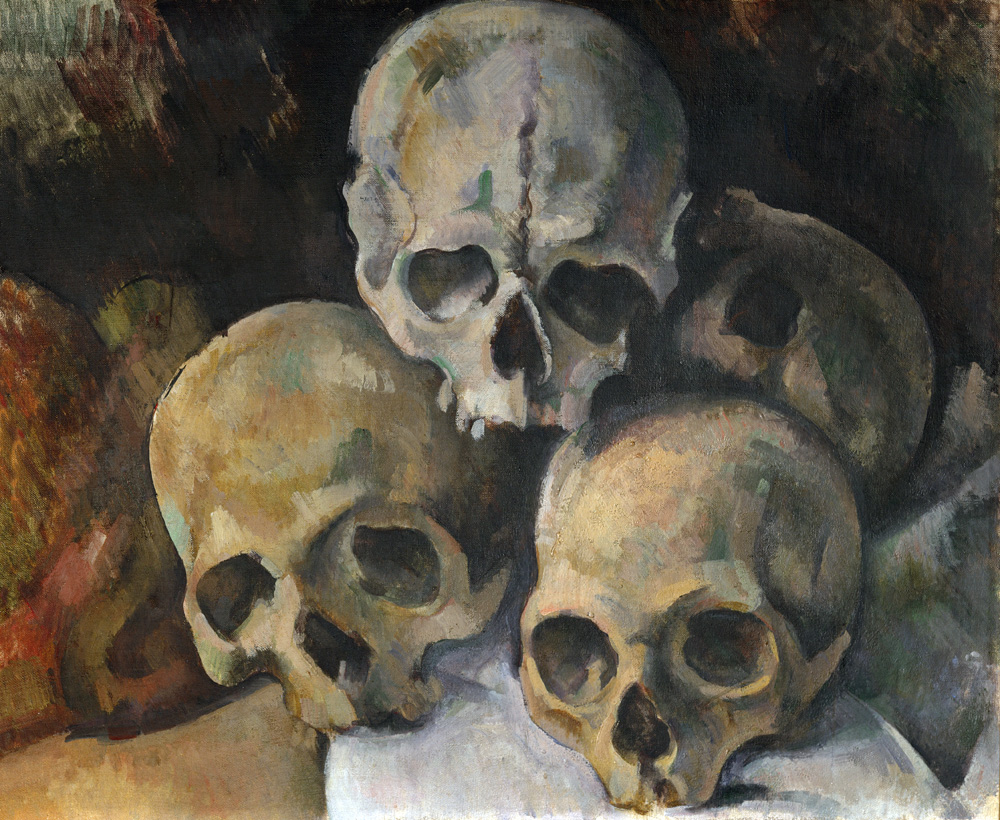
Pyramid of Skulls, by Paul Cézanne, c. 1899.
There was, of course, another aspect to consider in the mother’s actions, Appleby pointed out—“the emotional underpinnings of such behavior.” These, he wrote, “are more difficult to explore, but are equally interesting and important, if not more so.” He expressed his surprise at finding very few peer-reviewed studies of similar behavior in other canids. Although there are many anecdotal reports and YouTube videos of dogs hovering worriedly over a dead dog pal, or lingering at their owner’s coffin or grave, apparently few scientists have observed such events firsthand. Without the kind of data the elephant researchers have gathered, scientists can only speculate about what the death of the pup meant emotionally to his mother and siblings. But if we compare the mother dingo’s behavior to that of some humans overwhelmed by grief, we can’t ignore the striking similarities.
“On occasions, [human grief] may take the form of a complete and consistent refusal to acknowledge the death at all,” Archer states in The Nature of Grief, “even to the extent of keeping the body in the house for weeks, months, or even years…Accounting for such actions, one man said of his mother, ‘I couldn’t accept that she’d died. I wanted things to go on the same.’”
Denial was Flint’s reaction, too, to his mother’s death, and he never got beyond it. To heal, we must go through five stages of grief, from denial to acceptance, psychologists tell us. In time, the dingo mother left her dead pup behind; so too did Masya, the chimpanzee mother who watched over her infant’s body in the sunlit field. Death is an end, a nevermore. It is the hardest part of life for the living, something it seems that even our fellow animals know. In our evolved feelings of grief, we are all members of the animal kingdom.
